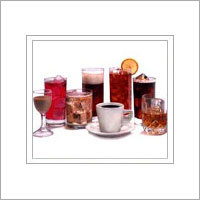Product Description
Caramel Colour
We are manufacturer, exporter and supplier of caramel colour, natural caramel colour, liquid caramel colour defined as Tinctorial Power, KO.56. Tinctorial power is the absorbance of a 0.1% weight / volume solution. It is measured through a 1 cm light path at a wavelength of 560 nanometers (nm). The weight/ volume is measured using a high quality spectrophotometer. Higher the value of the absorbance, darker is the Caramel Color.
Color tone is also an important factor. The color tone is defined by the Hue Index that is the measurement of the color hue or red characteristics of the Caramel Color, a function of the absorbance at 510 and 610 nm. As a fact, the higher the Tinctorial Power, lower will be the Hue Index and the lower will be the red tones.
Specific Gravity
The specific gravity of our caramel color ranges from 1.25 - 1.38 pounds/ gallon that corresponds to a range of about 10.4 - 11.5 pounds/gallon. The corresponding dry substance content of the liquid caramel color ranges from 50% - 70%.
Ionic Charge
Most of the caramel color that we use are anionic i.e. its molecules are negatively charged. But in certain applications, beer and meat products, it is required to have a cationic i.e. positively charged. This happens due to the proteins found in these products.
Sulfite Considerations
Caramel color usually contain sulfites because it is produced by using sulfite reactants. Since the percentage of the sulfite is very low, it is taken into account of consideration while complying to the FDA regulations. Positively charged caramel color is also produced. In its production process, sulfite is not used. We have developed such caramel color that helps the food manufacturers to keep sulfite content low in their products.
Caramel Color In High Alcohol or High Salt Systems
Certain products are very stable in concentrated high salt or high alcohol. In these products caramel colors are required. Our caramel color is available with these properties.
Viscosity.The viscosity of caramel color varies. Hence, it should be confirmed that the viscosity of the caramel color is not a reflection of its color strength. Lower viscosity is easier to handle, dissolves faster, has greater stability and longer shelf life.

